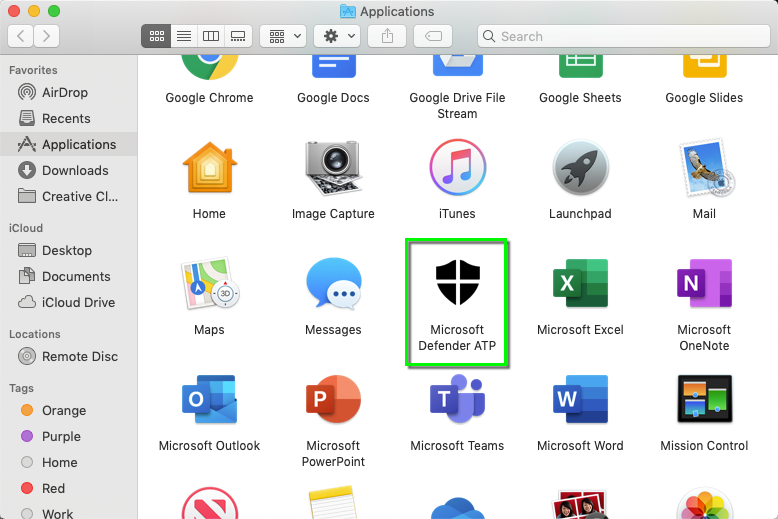

- SOFTWARE UNINSTALL MICROSOFT OFFICE 2016 MAC HOW TO
- SOFTWARE UNINSTALL MICROSOFT OFFICE 2016 MAC FOR MAC
- SOFTWARE UNINSTALL MICROSOFT OFFICE 2016 MAC INSTALL
- SOFTWARE UNINSTALL MICROSOFT OFFICE 2016 MAC UPDATE
SOFTWARE UNINSTALL MICROSOFT OFFICE 2016 MAC INSTALL
Note: The steps to install the 2016 or 2013 versions of Office Professional Plus, Office Standard, or a stand-alone app such as Word or Project might be different if you got Office through. If you need to uninstall Office first, see Uninstall Office from a PC or Uninstall Office for Mac. A What's New in Word window will display. Go to your Applications folder and select Microsoft Excel.When complete, the "You're almost done message" will display.
SOFTWARE UNINSTALL MICROSOFT OFFICE 2016 MAC FOR MAC
Follow the steps in the Microsoft Office 2016 for Mac Installer to complete the installation (if your computer has a password, you'll be prompted to enter it). Ctrl+click or right-click the applications. Work online or offline, on your own or with others in real timewhatever works for what you’re doing. Command +click to select all of the Office 2016 for Mac applications. Start quickly with the most recent versions of Word, Excel, PowerPoint, Outlook, OneNote and OneDrive combining the familiarity of Office and the unique Mac features you love. After Office downloads, double-click Microsoft_Office_2016_Installer.pkg (in Downloads) Step 1: Remove Office 2016 for Mac applications. For more information, see Remove existing versions of Office before installing Office LTSC 2021. Click Install below Install Office 2016 for Mac You can remove most Office products that were installed with Windows Installer (MSI), such as Office 2016 or Office 2013, from the device as part of the installation of Office LTSC 2021. In the upper right hand corner, click Settings gear icon and select Office 365 Settings.  In the Authentication Required window, enter your campus email address and NetID password and then select Log In. Enter your Stony Brook Email Address as username and select Sign In (don't enter a password yet). You must be signed in as an administrator on the Mac or provide an administrator name and password to complete these steps. Before beginning, uninstall any trial versions of Microsoft Office that may exist on your computer You can easily uninstall Office for Mac apps such as Word, Excel, PowerPoint, OneNote, and Outlook using these instructions. Your campus email and your NetID password. Active SBU student (registered or eligible to register for classes) or active west campus employee (currently receiving a salary) status. After that, Ctrl + click all the folders and then choose Move To Trash.You can download the latest suite of Microsoft Office applications from the Office 365 portal for up to 5 devices. Go back to your Finder and then launch Library and choose Containers.
In the Authentication Required window, enter your campus email address and NetID password and then select Log In. Enter your Stony Brook Email Address as username and select Sign In (don't enter a password yet). You must be signed in as an administrator on the Mac or provide an administrator name and password to complete these steps. Before beginning, uninstall any trial versions of Microsoft Office that may exist on your computer You can easily uninstall Office for Mac apps such as Word, Excel, PowerPoint, OneNote, and Outlook using these instructions. Your campus email and your NetID password. Active SBU student (registered or eligible to register for classes) or active west campus employee (currently receiving a salary) status. After that, Ctrl + click all the folders and then choose Move To Trash.You can download the latest suite of Microsoft Office applications from the Office 365 portal for up to 5 devices. Go back to your Finder and then launch Library and choose Containers. SOFTWARE UNINSTALL MICROSOFT OFFICE 2016 MAC UPDATE
03 Update for Microsoft Office 2016 (KB5002138) 64-Bit Edition Microsoft has released an update for Microsoft Office 2016 64-Bit Edition. Once you are in the View Options dialog box, choose 'Show Library Folder' and then click on the Save button. The Office Deployment Tool (ODT) is a command-line tool that you can use to download and deploy Click-to-Run versions of Office, such as Microsoft 365 Apps for enterprise, to your client computers.After that, go ahead and click on the 'View' button and then choose 'Show View Options' Go to the Finder menu located at the top and then click on the 'View' button and then click 'as List'.'Bug' will be in the app itself and deleting them is enough to prevent them from sticking around. Launch Finder and then press the 'Command + Shift + h' at the same time It will just get re added when you reinstall.
SOFTWARE UNINSTALL MICROSOFT OFFICE 2016 MAC HOW TO
How to remove Office license files on a Mac? For you to be able to remove all of your files from your user library folder, what you need to do first is to set the Finder View options:






 0 kommentar(er)
0 kommentar(er)
